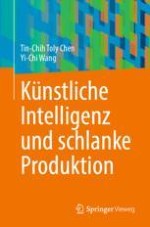2023 | OriginalPaper | Buchkapitel
2. Künstliche Intelligenz in der Fertigung
verfasst von : Tin-Chih Toly Chen, Yi-Chi Wang
Erschienen in: Künstliche Intelligenz und schlanke Produktion
Aktivieren Sie unsere intelligente Suche, um passende Fachinhalte oder Patente zu finden.
Wählen Sie Textabschnitte aus um mit Künstlicher Intelligenz passenden Patente zu finden. powered by
Markieren Sie Textabschnitte, um KI-gestützt weitere passende Inhalte zu finden. powered by
Zusammenfassung
-
Datengetriebene KI (d. h., gehirnähnliches Lernen), einschließlich künstlicher neuronaler Netzwerke, maschinelles Lernen (überwachtes Lernen, unüberwachtes Lernen, statistisches Lernen), evolutionäres Rechnen, unscharfe Logik usw. Datengetriebene KI wird oft im Kontext von Mustererkennung, Klassifizierung, Clustering oder Wahrnehmung verwendet.
-
Symbolische KI (d. h., Modellierung und Wissensschlussfolgerung), einschließlich Ontologie, semantische Graphen, wissensbasierte Systeme, Schlussfolgerungen usw. Multikriterielle Entscheidungsfindung, Produktionsplanung und Auftragsplanung sind typische Anwendungen dieser Kategorie.
